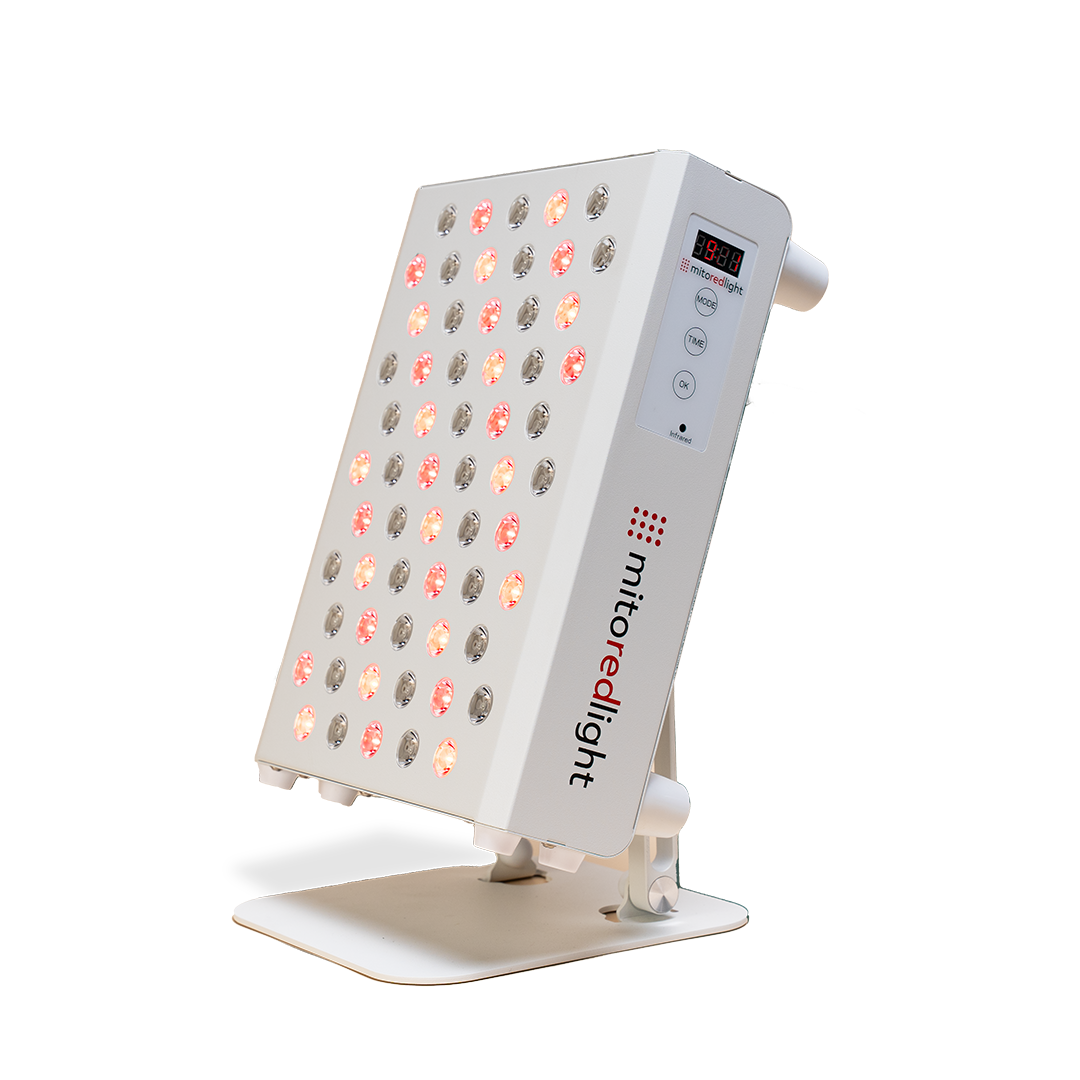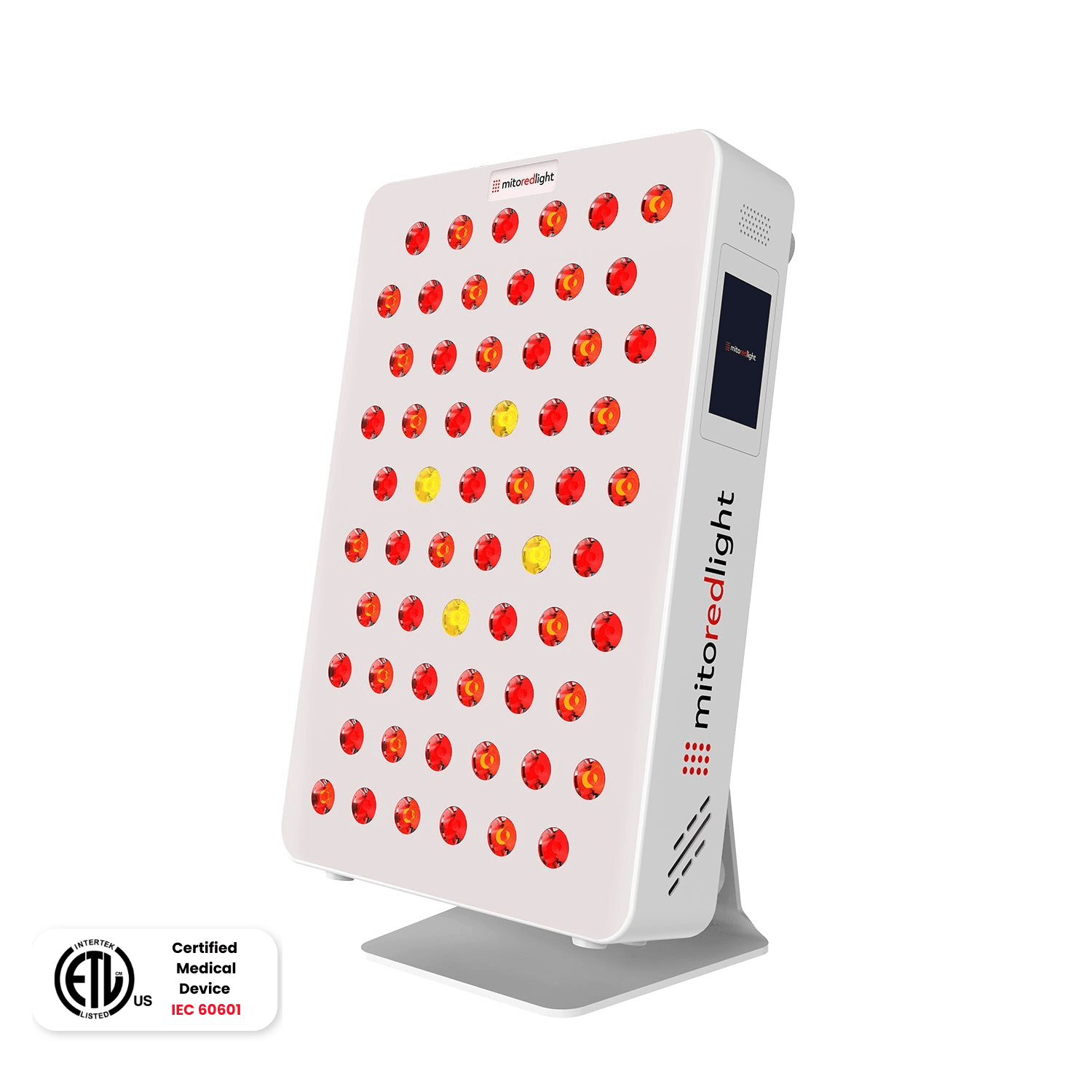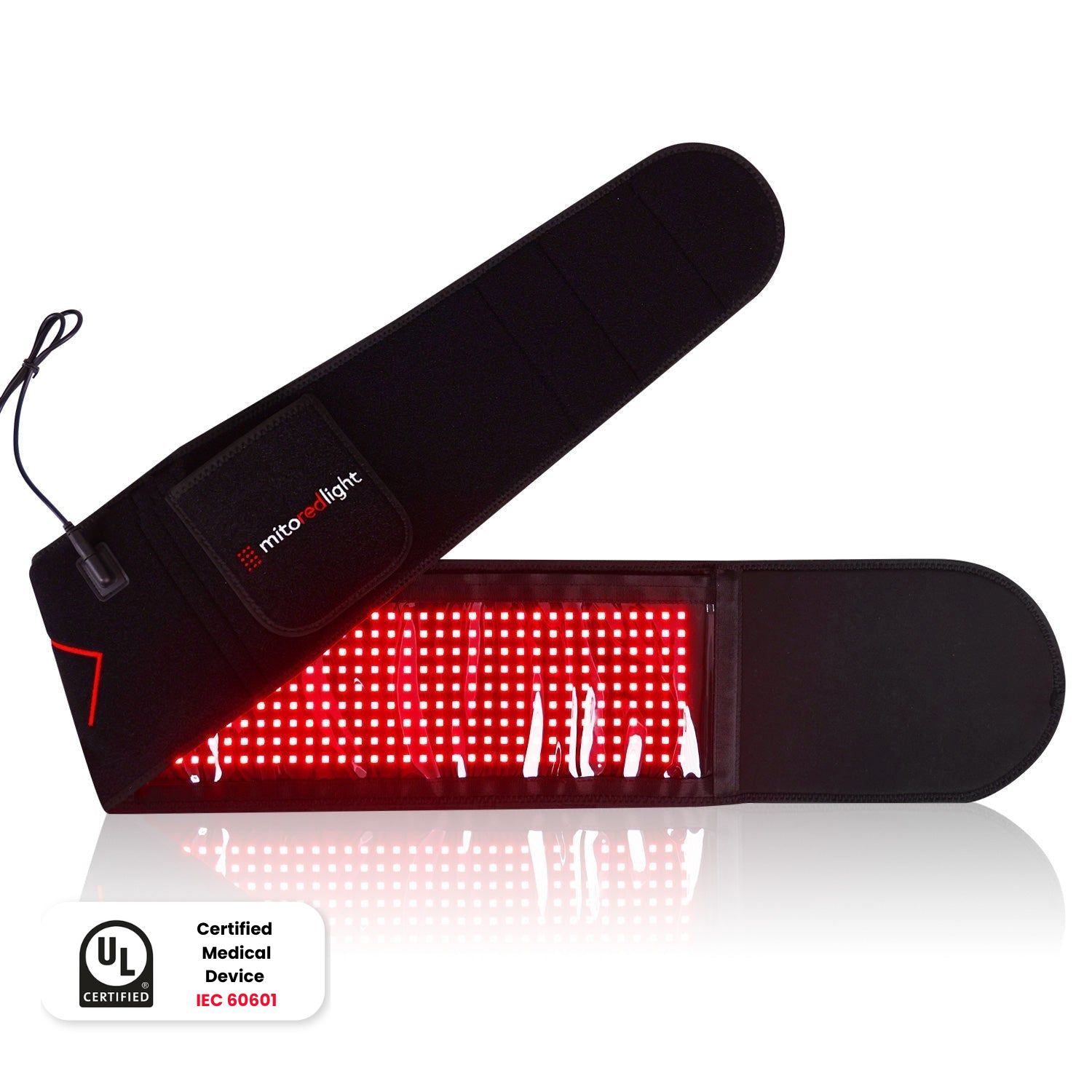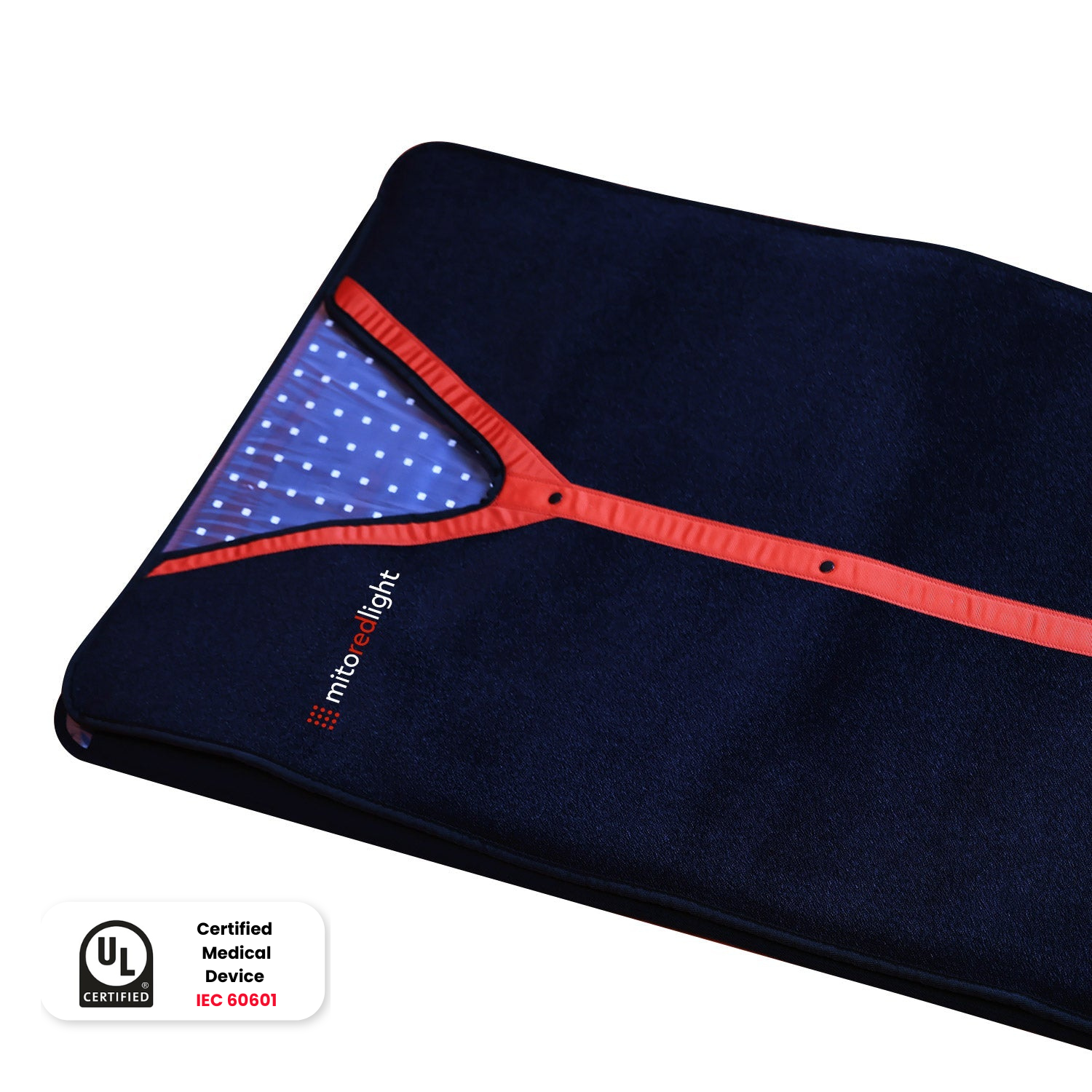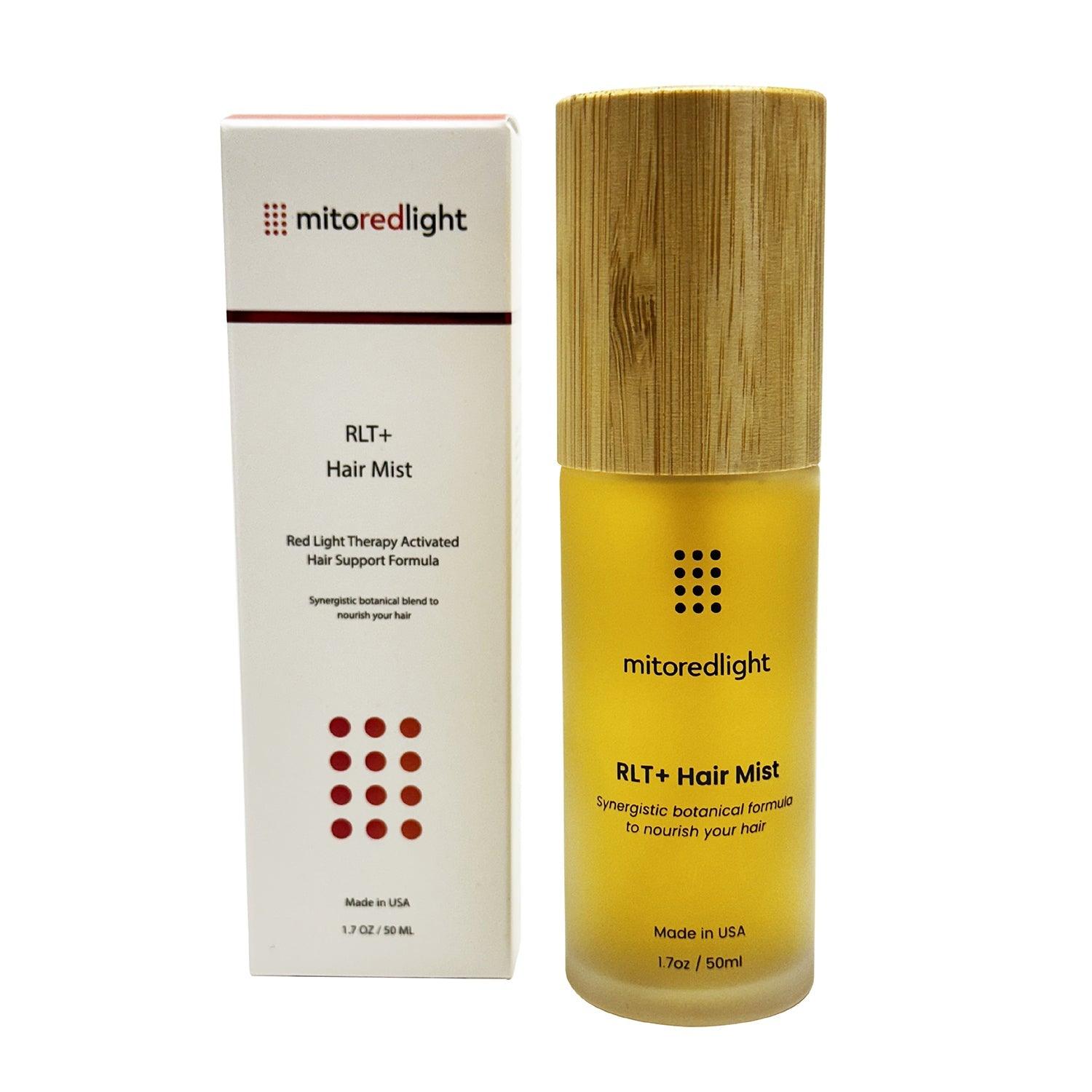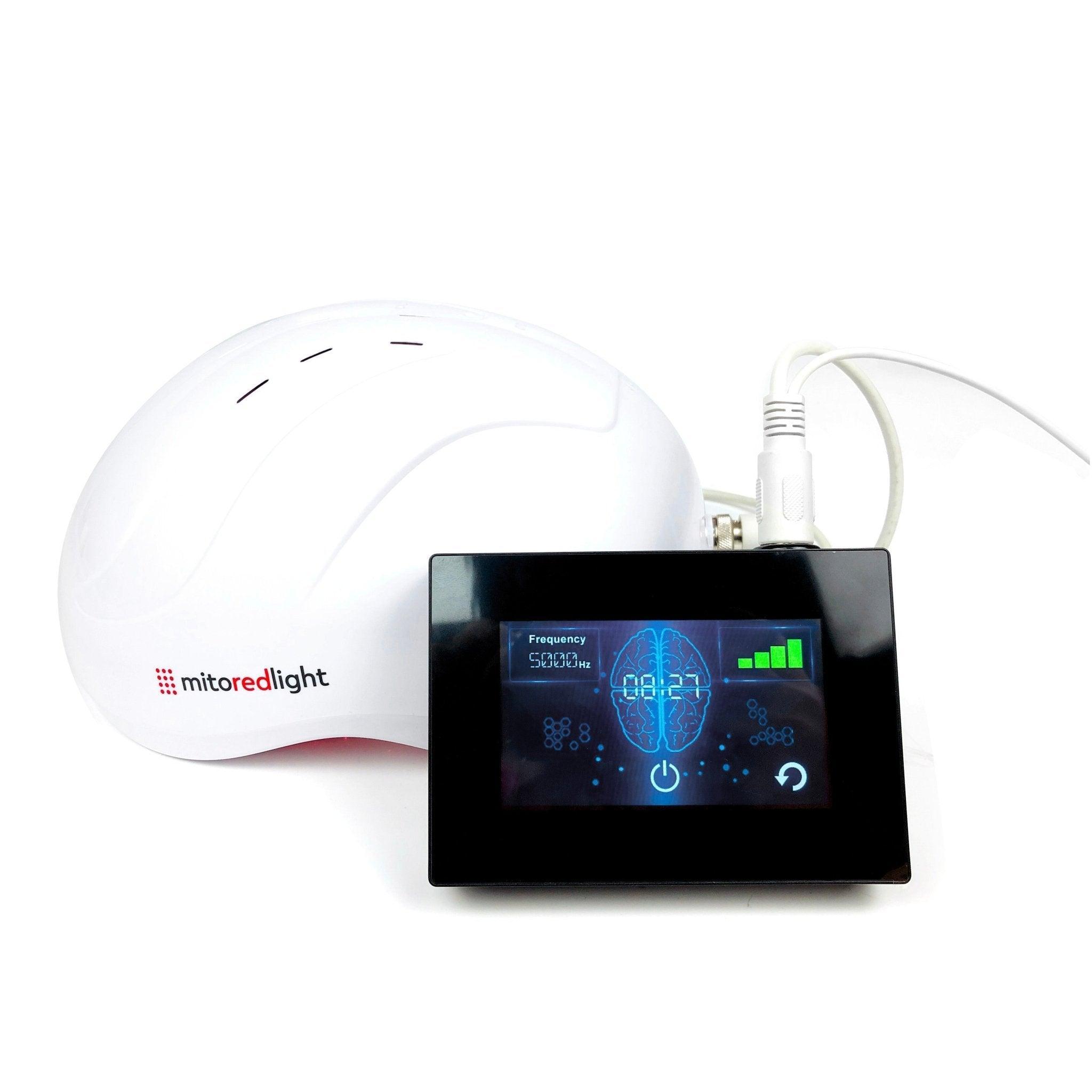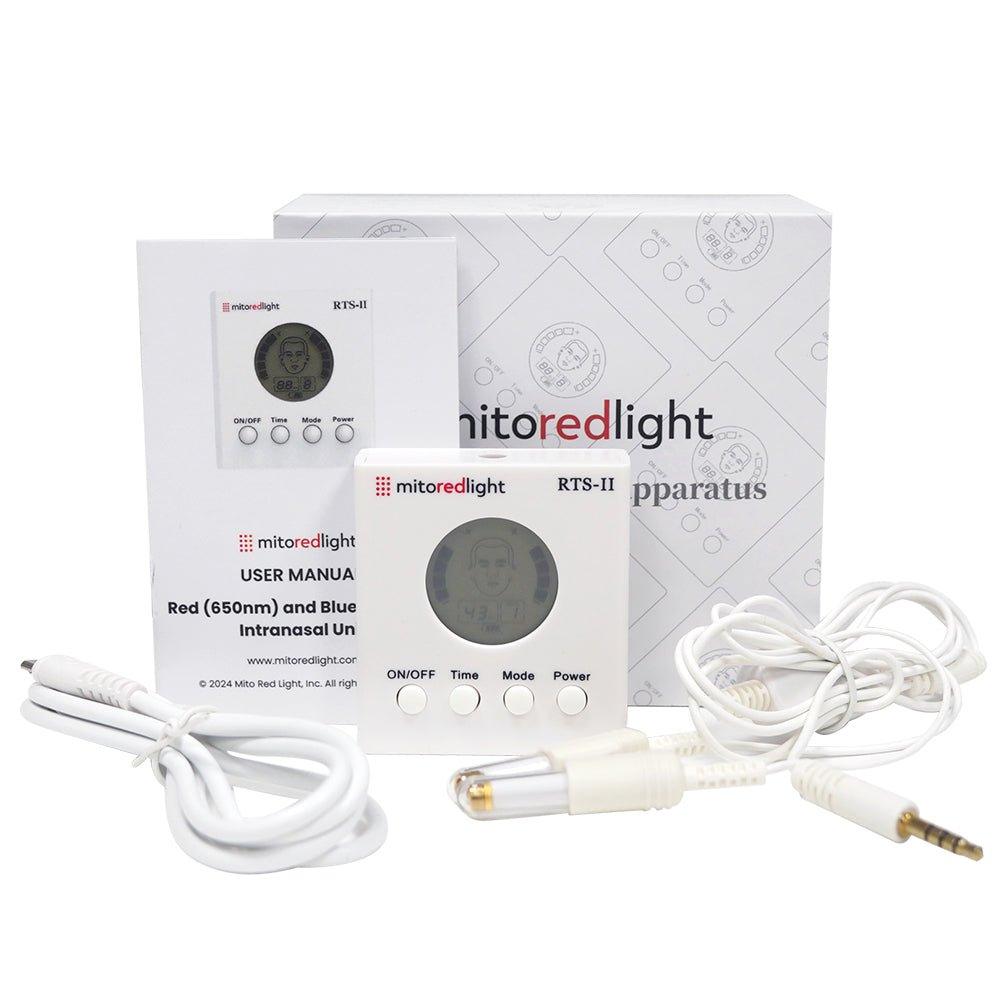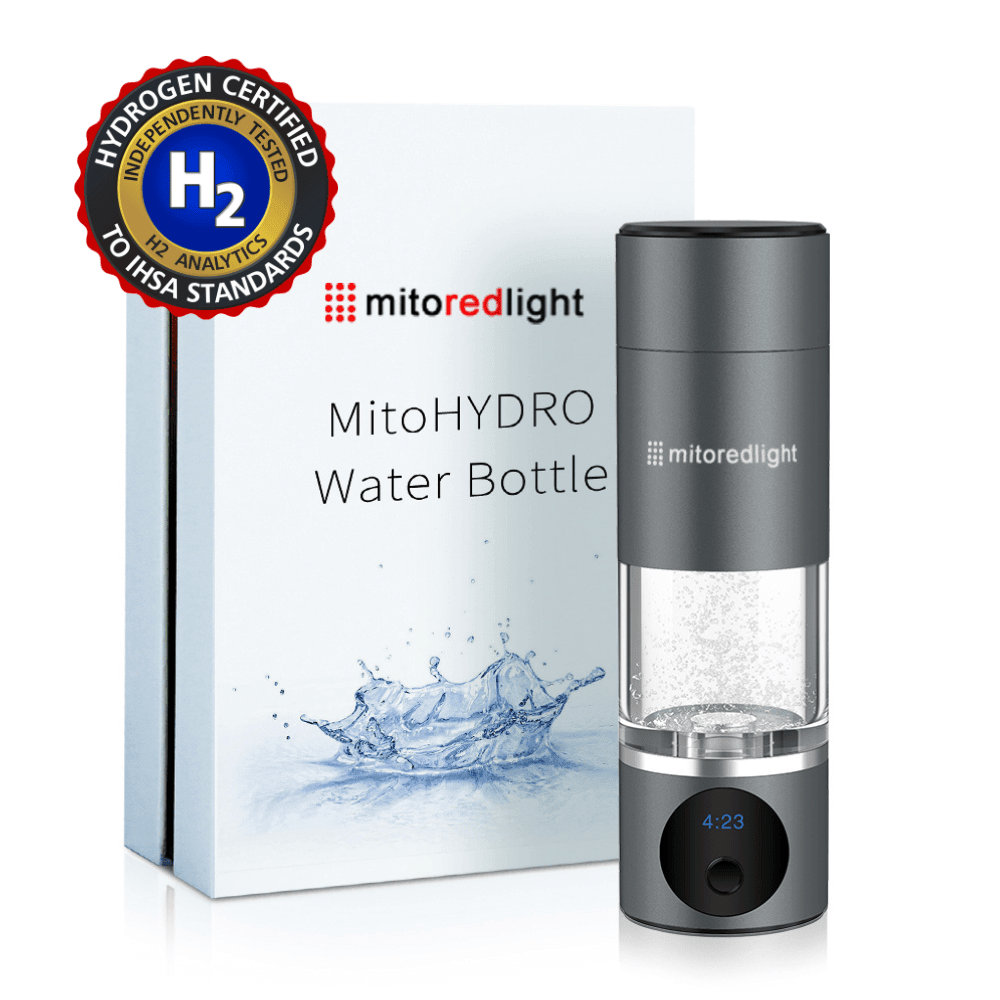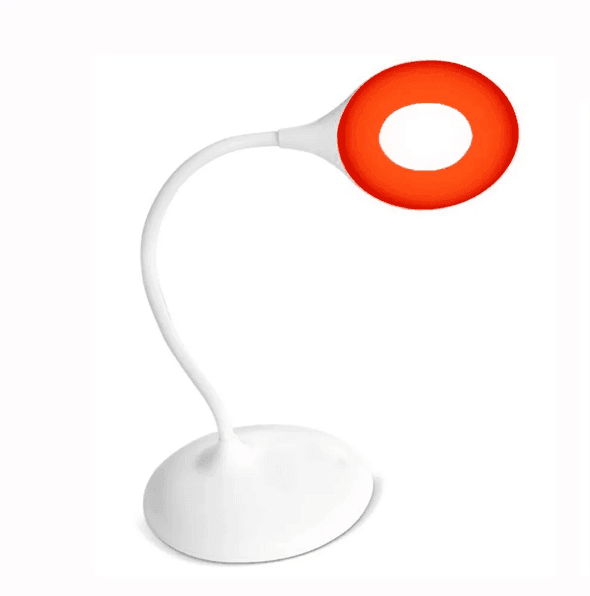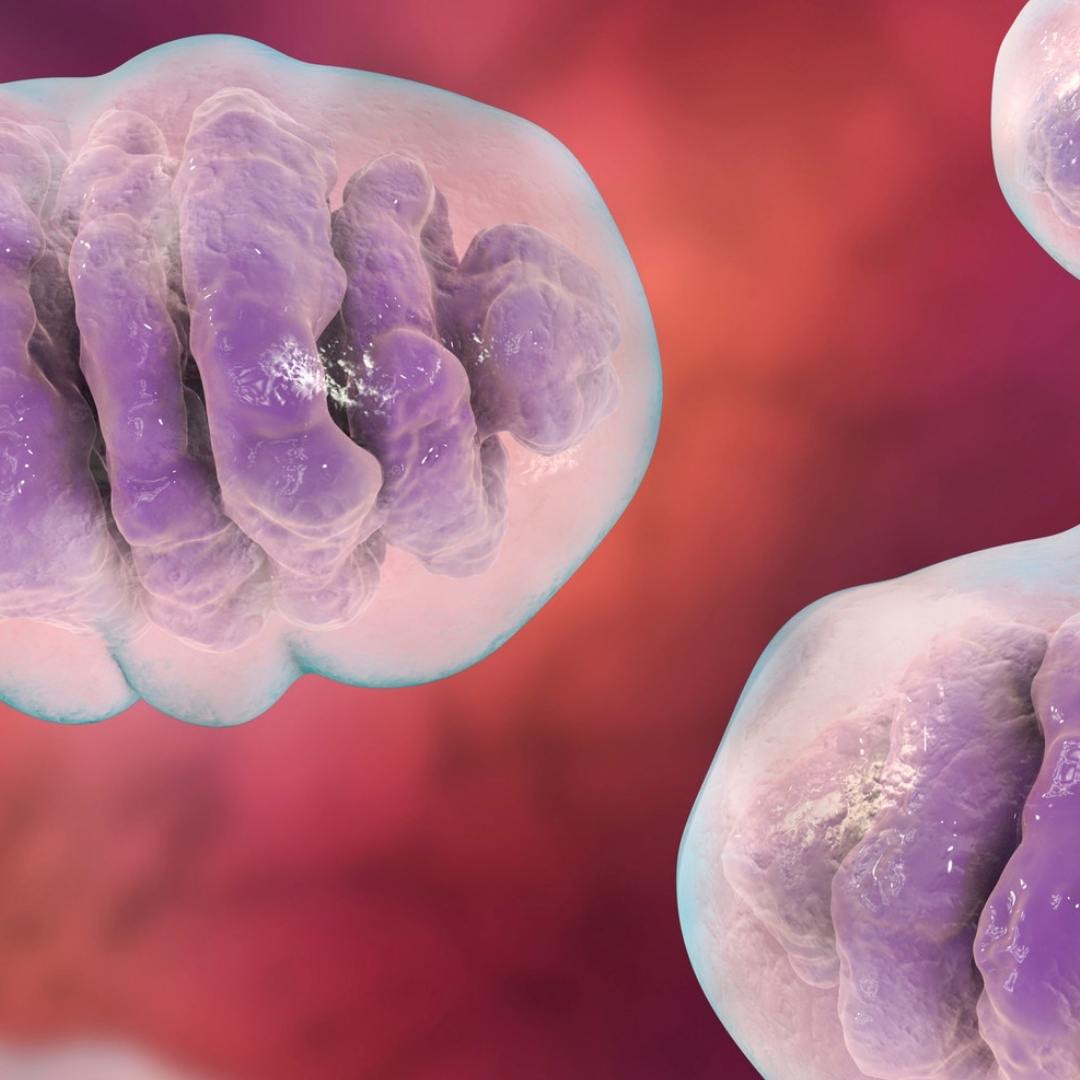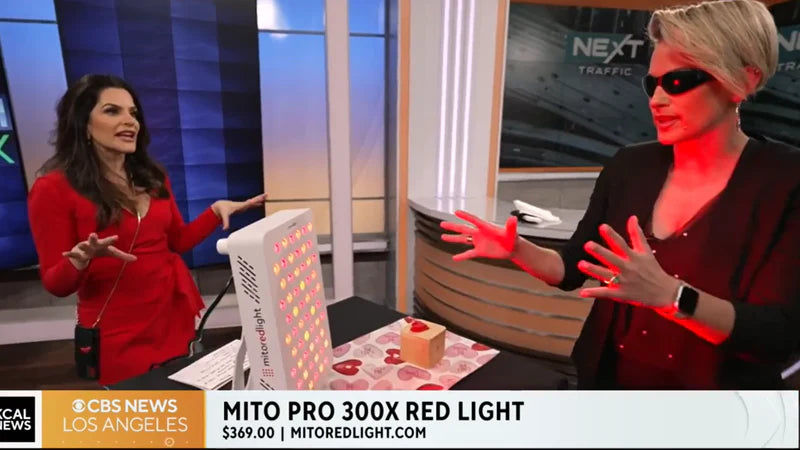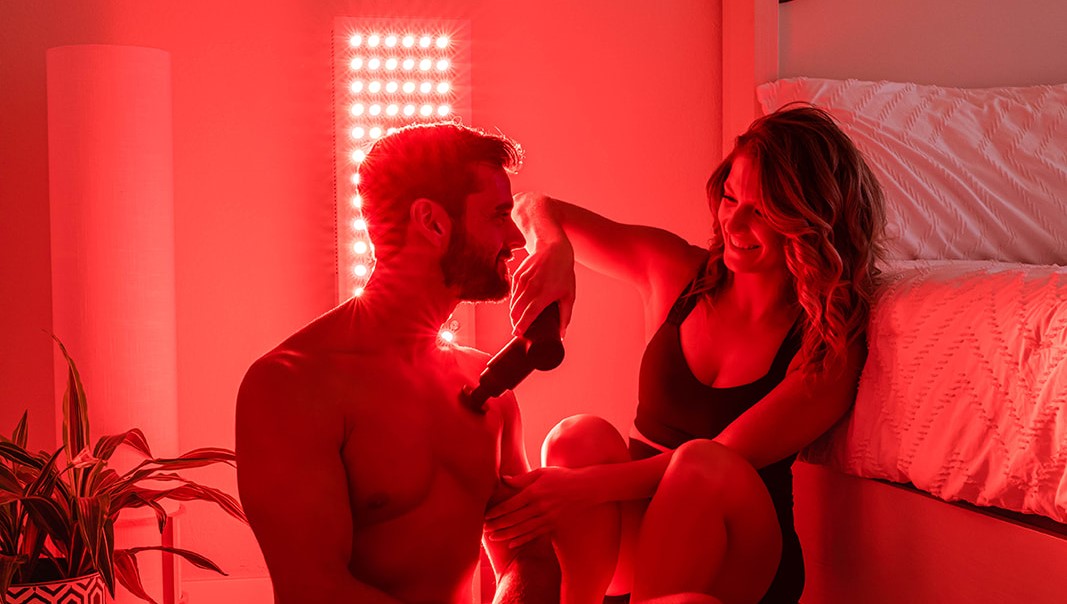Red light therapy for hair growth employs wavelengths between 630-660 nm and 810-850 nm to stimulate hair follicles, enhancing natural growth cycles through non-invasive treatment. Multiple FDA-cleared devices are available for home use against androgenetic alopecia in both men and women.
The therapy activates cytochrome c oxidase, a mitochondrial enzyme that absorbs red and near-infrared light, boosting ATP production and cellular repair. Clinical studies show hair density improvements of up to 43% over 24 weeks with consistent use. In 2025, advancements include dual-wavelength systems and app-enabled compliance tools for enhanced treatment precision.
Your scalp routine should be easy — and trustworthy. That’s why Mito Red Light uses multi-wavelength engineering and ESPEO™ spectrum technology, backed by careful quality controls, to support structured at-home sessions.
Our quad-wavelength panels provide 630 nm, 660 nm, 830 nm, and 850 nm light, and their output is validated by third-party testing to help you stay consistent and confident over time.
How Does Red Light Therapy Stimulate Hair Growth?
Red and near-infrared light in the 630-660 nm and 810-850 nm ranges interact with follicle mitochondria to enhance ATP production and cellular repair, promoting hair growth over extended periods.
Results vary based on hair loss stage and treatment consistency, with FDA clearance for pattern hair loss in men and women.
Cellular Targets: Mitochondria and Cytochrome C Oxidase
Red and near-infrared light are thought to interact with a natural enzyme in our cells called cytochrome c oxidase. When this enzyme absorbs certain wavelengths, it helps the cell make more ATP — the energy cells use to do their jobs.
For the scalp, that extra energy may support normal follicle activity and a healthy growth cycle. With steady, well-timed sessions, some people notice gradual improvements over time.
Red vs Near-Infrared Wavelengths: Depth of Penetration
Hair growth protocols often combine red light (630-660 nm) and near-infrared light (810-850 nm) to stimulate follicular activity at varying depths. Red wavelengths target surface structures, while near-infrared penetrates deeper into the scalp where follicle roots reside. This dual approach stimulates the entire follicle structure for comprehensive growth support.
Vascular Dilation and Anti-Inflammatory Responses
The therapy may help support blood flow and reduce inflammation around hair follicles. Blood vessel dilation increases nutrient delivery to follicles, promoting hair regrowth.
Dual-wavelength LED low-level laser therapy (LLLT) may also decrease DHT production, improving conditions for hair growth by helping with hormonal factors linked to androgenetic alopecia.
2025 Breakthroughs in Red Light Therapy for Hair
The field is shifting from single-wavelength devices to sophisticated dual-wavelength systems, with app-guided adherence tools and double-blind clinical data establishing precise treatment protocols.
Dual-Wavelength ESPEO™ Spectrum
Research supports dual-wavelength systems as more effective than single-wavelength devices in clinical trials, which is why we offer an ESPEO™ design at Mito Red Light. Our technology combines wavelengths aligned with bio-active peaks for optimal application.
Recent Double-Blind Trials and Measurable Outcomes
Studies provide benchmarks for realistic expectations. Participants using red light therapy saw a 43% increase in hair density over 24 weeks, with dual-wavelength users gaining 21 more hairs per cm² than placebo groups after 16 weeks, requiring 80% compliance.
Double-blind studies have shown significant terminal hair density increases after 26 weeks, establishing a timeline for noticeable changes between 3 to 6 months.
How To Design a Home Red Light Protocol for Clinic-Level Results
Effective home protocols require three to five sessions per week, each lasting 10-30 minutes, maintained for around three to six months to evaluate progress.
Dosage Math: Irradiance, Fluence (J/cm²), and Session Length
Understanding a couple of simple terms makes planning your sessions much easier. Irradiance is the light’s intensity at the surface (how bright it is where it hits your skin), measured in mW/cm². Fluence is the total light energy you receive over time, measured in J/cm².
Put simply: fluence = irradiance × time. That’s why a higher-irradiance panel can reach the same energy target in a shorter session.
For cadence, many people aim for three to five sessions per week for about 10-30 minutes per area, always following the instructions for your specific device. With light sessions, regular, well-timed use tends to be more helpful than long, sporadic sessions.
A couple of setup tips for the scalp? Keep a steady panel-to-scalp distance (per your device manual) and part hair in sections so light reaches the skin evenly.
Scalp Preparation and Post-Treatment Care
Maximize light penetration with minimal prep. Start with a clean, dry scalp, as oils can hinder light transmission. Part hair during treatment for even coverage. Avoid photosensitizing topicals before sessions unless directed by a healthcare provider, as they can affect absorption.
Post-treatment care should be gentle. If you’re combining red light therapy with medications, apply products as per a clinician’s guidance. A flushed scalp post-treatment is normal and typically resolves within an hour.
Tracking Progress
Standardized tracking is essential for evaluating improvement. Take monthly photos in identical conditions for accurate comparisons. Use hair-count grids or app-based markers to monitor changes in a 1 cm² area. Expect noticeable changes over 3-6 months, requiring patience and consistency.
How To Choose a Red Light Therapy Device
Outcomes depend on device classification, wavelength precision, and coverage capabilities. When selecting caps or combs for hair growth, try to prioritize FDA-cleared options rather than general wellness devices.
FDA-Cleared LLLT vs. Generic LED Caps
TheAmerican Hair Loss Organization identifies LLLT as the gold standard, cautioning that many generic LED caps lack robust evidence for hair regrowth. FDA-cleared devices undergo rigorous testing for safety and efficacy, providing documented specifications and clinical validation, unlike generic products.
|
Device Type |
Wavelength Class |
Evidence Level |
FDA Status |
Ideal Use Case |
|
FDA-cleared LLLT caps |
630–670 nm lasers |
Clinical trials |
Cleared for androgenetic alopecia |
Pattern hair loss treatment |
|
Generic LED caps |
Variable LED mix |
Limited studies |
Not hair-loss specific |
General wellness applications |
|
Professional panels |
Multi-wavelength |
Emerging research |
Wellness classification |
Comprehensive scalp protocols |
Mito Red Light panels serve as multi-wavelength wellness tools, while FDA-cleared caps and combs target hair loss. Choose based on treatment goals and required clinical validation.
Key Specs: Wavelength Mix, Power Density, Treatment Area
Hair growth protocols utilize red 630-660 nm and near-infrared 810-850 nm wavelengths. The wavelength mix optimizes cellular activation, making it crucial for outcomes. Power density, measured as irradiance in mW/cm², should be balanced with treatment time. Effective protocols achieve target fluence with moderate-intensity sessions rather than brief high-intensity exposure.
Coverage area impacts treatment convenience; full-scalp devices like caps enhance compliance, while professional panels can target specific areas. Choose a device form factor that fits your lifestyle for consistent use.
Quality Signals: ESPEO™, IEC-60601 Safety, Third-Party Testing
Reliable devices exhibit quality markers indicating professional-grade engineering. Look forIEC-60601 safety certification, third-party validation, and documented spectral output verifying wavelengths and power levels.
Mito Red Light incorporates ESPEO™ spectral engineering and rigorous testing as quality measures, ensuring consistent performance and accurate wavelength delivery over time. Confirm FDA clearance for hair-loss applications and seek transparent specifications for general wellness panels.
Integrating Red Light Therapy Into a Holistic Hair-Restoration Plan
Light therapy effectively supports comprehensive hair restoration, tailored to individual hair loss stages and underlying causes with appropriate medical guidance.
Synergy With Minoxidil, Finasteride, and Nutritional Support
Combining LLLT with established medications produces synergistic effects, significantly increasing hair density compared to single treatments. This approach enhances cellular energy and blood flow while medications target hormonal factors.
Coordinate treatment timing with healthcare providers to optimize interactions. Adequate protein intake and essential micronutrients are crucial for healthy hair growth, guided by individual assessments.
When To Combine With PRP, Microneedling, or Exosome Serums
Consider add-on treatments, especially with moderate to advanced thinning, for even better results.
PRP, microneedling, and exosome products are a few common options. PRP brings growth factors, microneedling kick-starts healing, and exosome serums may improve cell-to-cell signaling.
The right timing and order matter, so work with a dermatologist or specialist. Choices should match your goals, hair-loss stage, and how you respond.
Long-Term Maintenance and Tapering Strategies
Sustainable results necessitate ongoing maintenance, as benefits typically diminish when treatment stops. Continuous intervention is essential to counteract hair loss processes.
Maintain three to five sessions per week during active treatment, then evaluate progress with standardized photos. If results stabilize after 6-12 months, cautiously test frequency reductions while monitoring for increased shedding.
Many users find that reducing to two to three sessions weekly maintains achieved benefits, though individual maintenance needs vary.
The Bottom Line
Red light therapy isn’t a quick fix, but it’s a steady, science-backed way to support hair growth, especially when you stick with it.
Using red wavelengths (commonly 630-670 nm), LLLT helps keep follicles in their growth phase longer and supports a healthier scalp. The real unlock is consistency.
Early changes often show up around 12 weeks, with fuller improvements between months four and six. Pair it with good scalp care and proven topicals, and check in with a qualified provider if you’re unsure what mix is right for you.
At Mito Red Light, we make it easy to get started with multi-wavelength devices built for reliable, repeatable use. If you’re ready to explore, we’d love to help — browse our lineup and find the device that fits your routine and goals.
DISCLAIMER : Mito Red Light devices are Class II wellness devices aimed at affecting the body through supporting cellular function. The information provided in this article and on this site is for educational purposes only and is not intended to imply effectiveness of Mito Red Light devices for any specific application. The information provided in this article and on this site is not intended to diagnose, treat, cure, or prevent any disease, is not a substitute for consultation with a licensed medical provider and should not be construed as medical advice. Click here to read our article on potential contraindications of red light therapy.
FAQs
How long before I see results?
Most notice early changes after 6-12 weeks, with more visible improvements typically around 3-6 months. Initial changes may include reduced shedding and improved texture before new growth appears. Patience and consistency are crucial.
How often should I treat and for how long each session?
Aim for 3-5 sessions weekly, lasting 10-30 minutes based on device specifications. Consistency is key; regular moderate sessions yield better outcomes than sporadic high-intensity treatments. Adjust lengths according to your device's irradiance and schedule.
Can I use red light therapy with minoxidil or other medications?
Yes, many users successfully combine light therapy with medications, often enhancing overall results. Coordinate timing with your dermatologist to ensure proper sequencing and avoid interactions; some apply topicals after light sessions, while others alternate timing.
Is red light therapy safe for all skin tones and scalp conditions?
Red light therapy is typically safe and well-tolerated across all skin tones, with no documented adverse effects related to melanin content. Consult a healthcare provider for active scalp conditions, inflammatory disorders, or known photosensitivity before starting treatment.
What if my hair loss is already advanced?
Light therapy is most effective in early to moderate thinning stages where follicles remain responsive. Advanced hair loss may require comprehensive treatment options, including medications or surgical interventions, assessed by a specialist for tailored recommendations.
Sources:
Low-Level Laser Therapy | American Hair Loss Organization.
IEC 60601-1:2005+AMD1:2012+AMD2:2020 CSV | International Organization for Standardization.
The growth of human scalp hair mediated by visible red light laser and LED sources in males | PubMed
